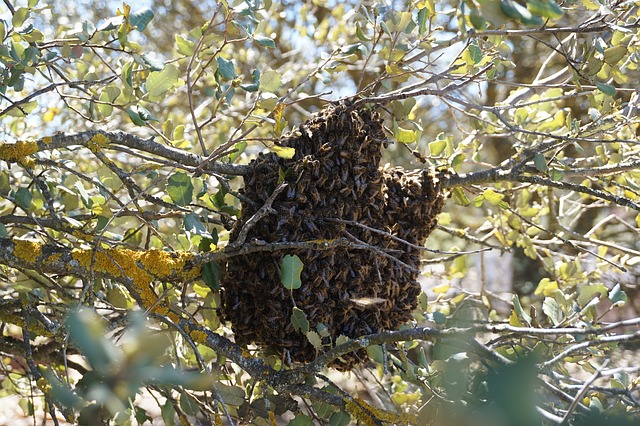
If you think you have a swarm of bees please click here for more information.
Between April and July honeybee colonies often swarm, it is also not uncommon for some honey bee colonies to swarm earlier or later than these months. They do this in order to reproduce and increase their genetic diversity. Swarming tends to be triggered by the number of bees in a colony growing too large for the capacity of hive or nest site. The old queen leaves the hive with approximately half the bees, and the bees left in the hive make a new queen. The new queen will mate with between 10 to 20 drones from hives in the area and this ensures the genetic diversity of the new hive. Meanwhile the old queen and her workers find a temporary resting place, usually within about 100m from the old hive, where they hang in a large football shaped cluster from a branch, on a wall or pole, or any other likely resting place. Scout bees then start to explore the local area looking for a suitable new home. The swarm can remain in its location from a few hours to up to 3 or 4 days, before moving into their new home that the scouts have found.